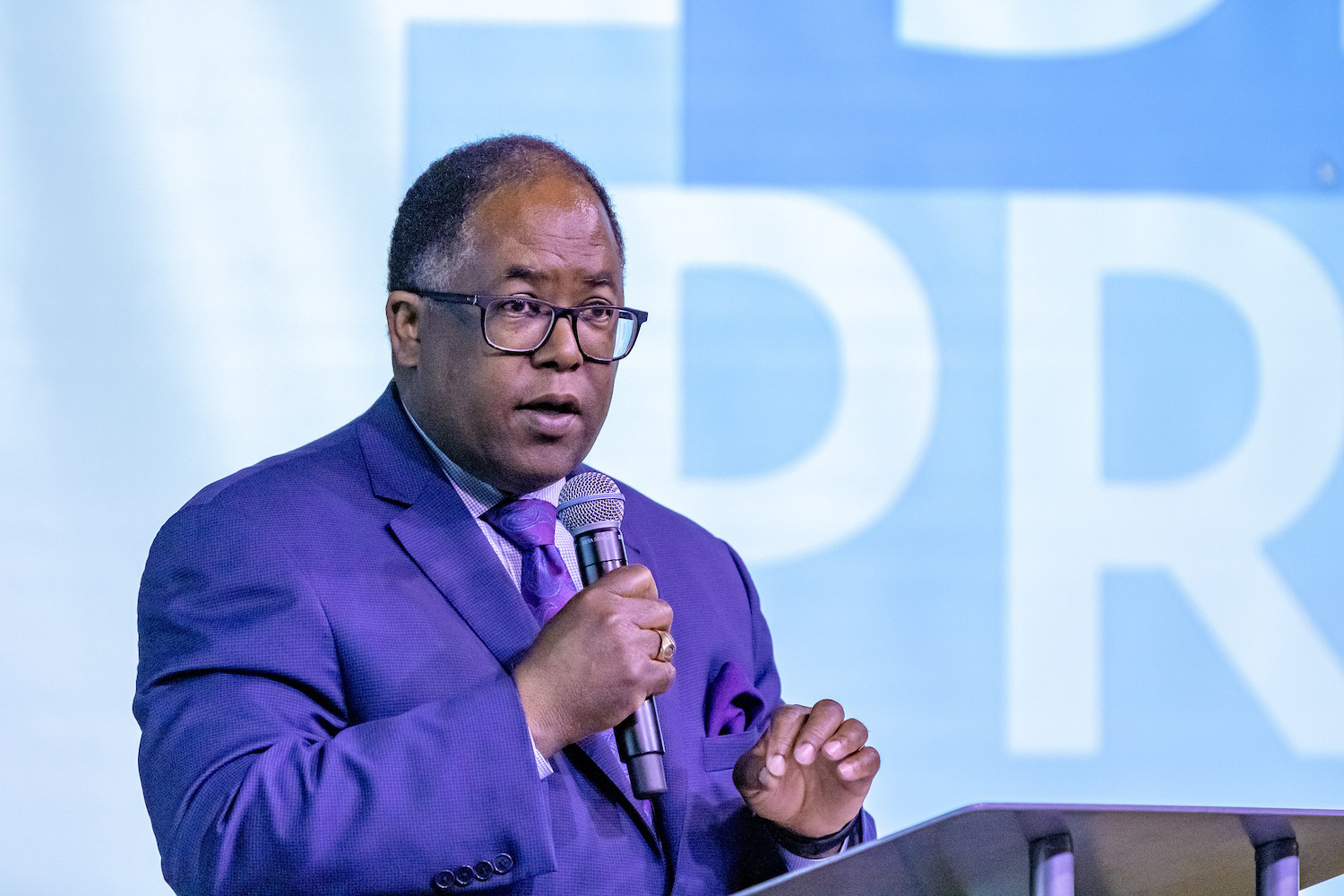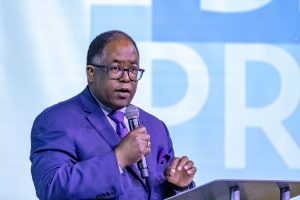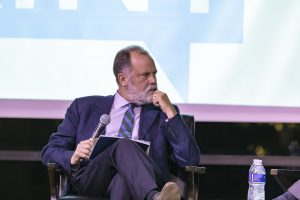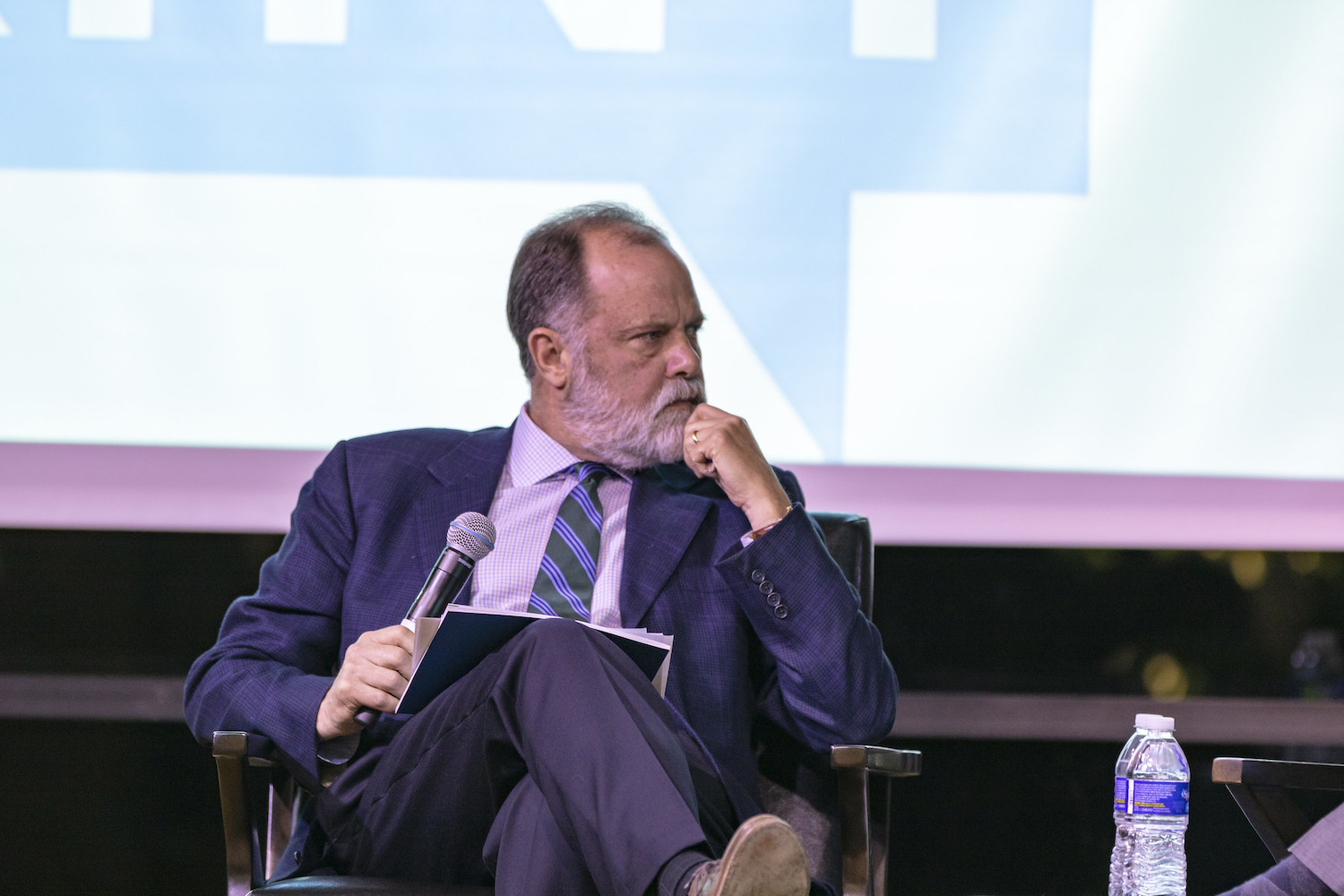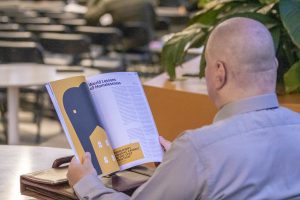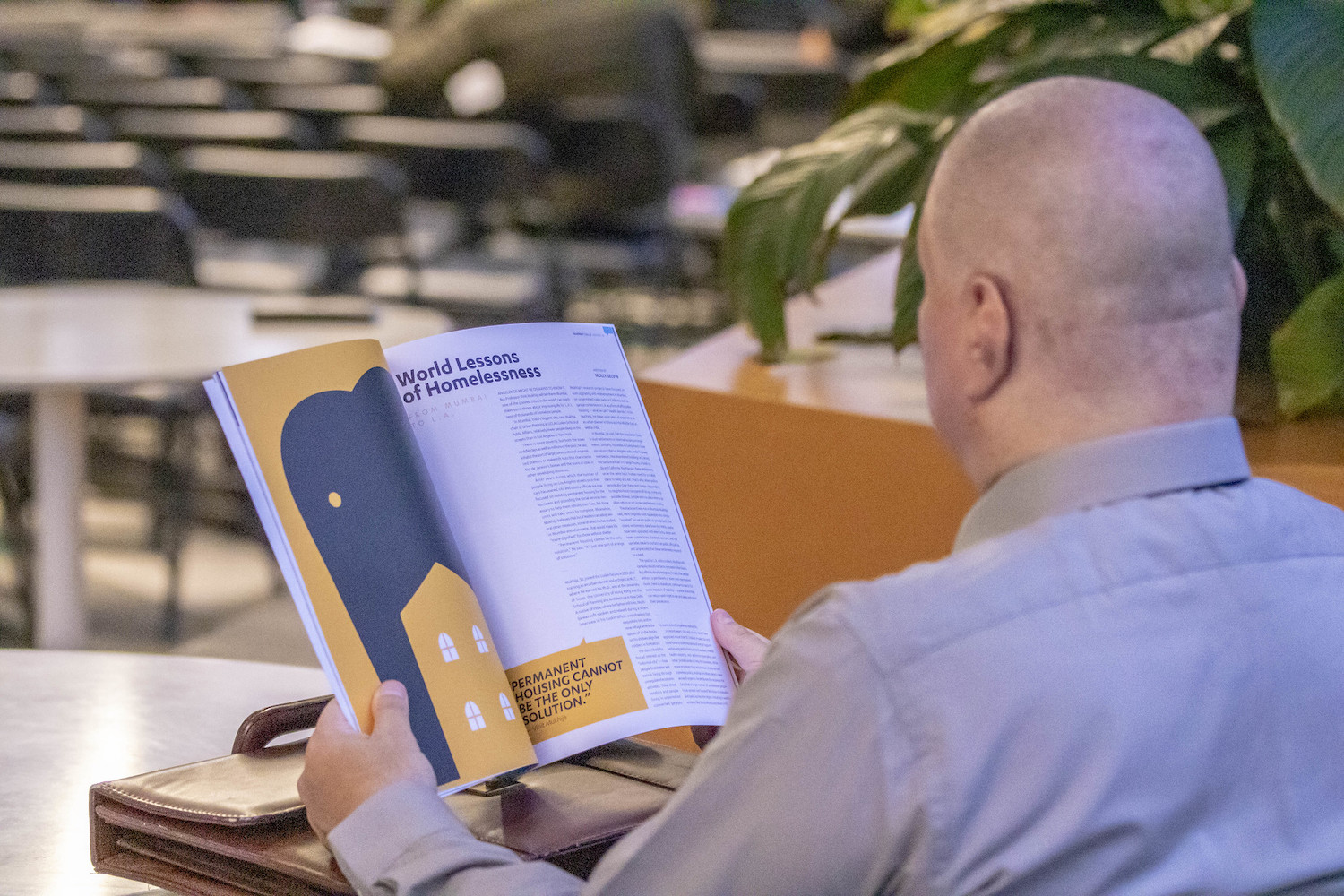By Mary Braswell
Ending homelessness is a stated priority for legislators and policymakers up and down the state.
But it’s also a moral imperative for every citizen, one that will “define our civic legacy in the eyes of future generations,” said Los Angeles County Supervisor Mark Ridley-Thomas.
“Homelessness is the most pressing problem in this region,” he said to open a wide-ranging dialogue hosted April 30 by UCLA’s Blueprint magazine. “Mere steps away from the dozens of cranes looming above the gleaming towers of downtown, we find Angelenos — our brothers and our sisters — in utter squalor.”
Blueprint is a civic affairs publication of the UCLA chancellor’s office and the UCLA Luskin School of Public Affairs. The event drew about 100 people to Cross Campus, a co-working venue in downtown Los Angeles.
Joining the conversation were public officials and scholars on the front lines of the region’s fight against housing insecurity: Phil Ansell, director of L.A. County’s homeless initiative; Christina Miller, deputy mayor for the city of Los Angeles’ homeless programs; and Vinit Mukhija, chair of UCLA Luskin Urban Planning. Mukhija’s research focuses on substandard housing in the United States and abroad, and it was featured in the latest issue of Blueprint. Editor-in-chief Jim Newton, a UCLA Luskin lecturer in public policy, moderated the panel.
Stark numbers framed the conversation: “We have 52,000 people on any given night experiencing homelessness in the county,” Miller said.
To ensure housing security for all who need it, 560,000 affordable units must be built, Ansell added.
The discussion made clear that homelessness takes many forms. The chronically homeless may spend years on the street. Others find shelter in their cars or dwell in makeshift or substandard living conditions. Many drift in and out of homelessness due to precarious incomes and high rents.
Each of these populations requires a different response. And all of the proposed solutions require not just money, but time.
Miller said 10,000 “permanent supportive housing” units will be built over 10 years thanks to Proposition HHH, the $1.2-billion city bond measure passed by voters in 2016. These units are designed for people suffering chronic disabilities — a small subset of those in need.
For short-term assistance such as temporary rent subsidies and job training, both the city and county offer rapid rehousing programs.
“People haven’t always connected the fact that the homelessness crisis is a housing crisis,” Miller said. “We see our system get better at lifting people up once they become homeless and getting them back into housing as quickly as we can, but we’re not seeing progress because the tide is too strong.”
Mukhija advocated for interim steps to provide safe living conditions while more permanent solutions make their way through the system.
“I love hearing all the numbers about 10,000 permanent supportive houses, and I think that’s the kind of thing that gets people galvanized to vote for a proposition and that’s wonderful,” he said. “But I would like to see storage for the homeless. I’d like to see more toilets. … I would like to see money targeted for improving existing accessory dwelling units,” such as garages that can be converted into shelter.
Ansell spoke about the county’s expanding Safe Parking L.A. program, which will soon be the largest of its kind in the nation.
“Safe parking means a parking lot where a person who lives in their car, van or RV can sleep safely at night, where there is security and they won’t be bothered, and there’s [an outdoor toilet] or other restroom facility, and hand washing,” Ansell said. “I think that’s a very important and promising strategy, particularly in a community where over half of our unsheltered homeless population is living in vehicles.”
Another county resource is la-hop.org, the county’s homeless outreach portal. “Anyone in Los Angeles County — a resident, a first responder, a city employee, a business, a faith organization — can use it 24 hours a day” to reach one of nearly 800 full-time outreach workers, Ansell said. A homeless person who needs immediate assistance should find a phone and dial 211.
The county’s homeless initiative was bolstered by the 2017 passage of Measure H, a sales tax expected to raise more than $350 million a year to combat homelessness. However, Ansell said, “This is not a crisis that the county can effectively address on its own.”
Citing support from government, philanthropy, the nonprofit sector and faith organizations, Ansell said, “We have hundreds of organizations and thousands of people who are involved on a full-time basis as part of this movement, and hundreds of thousands of other Los Angeles County residents who care very deeply about bringing their homeless neighbors home.”
“Housing and the Homeless: A Crisis of Policy and Conscience” is the theme of Blueprint’s latest issue, funded by a grant from Wells Fargo Bank.
More on the Event

